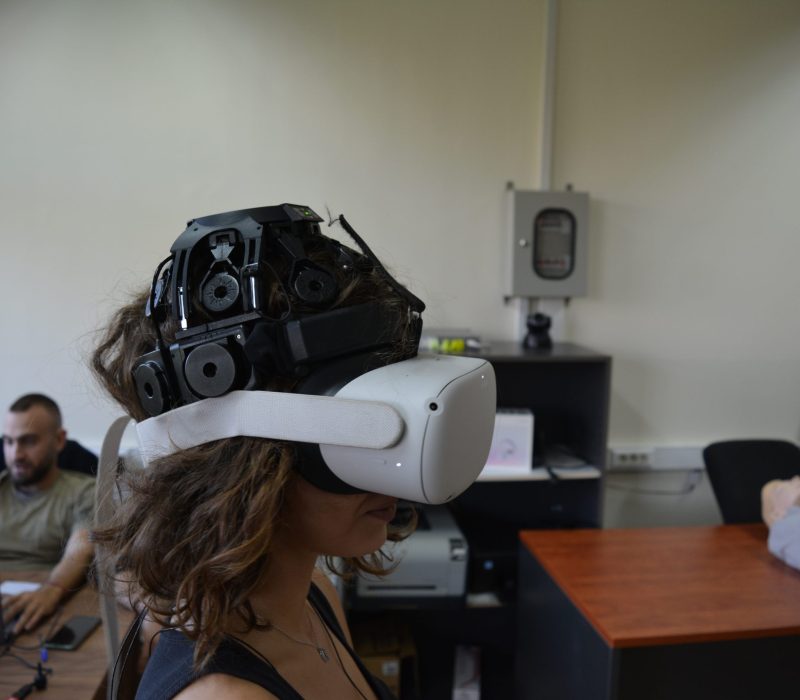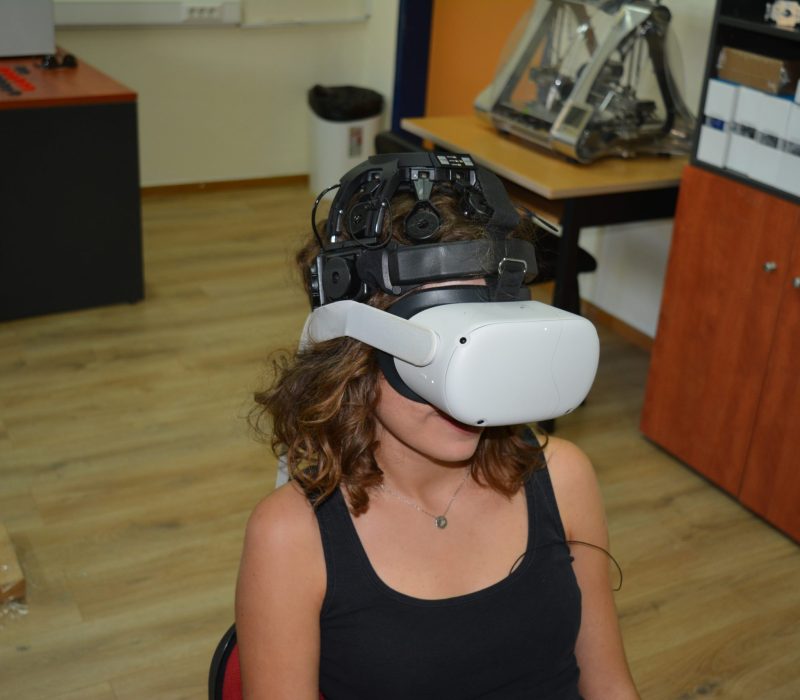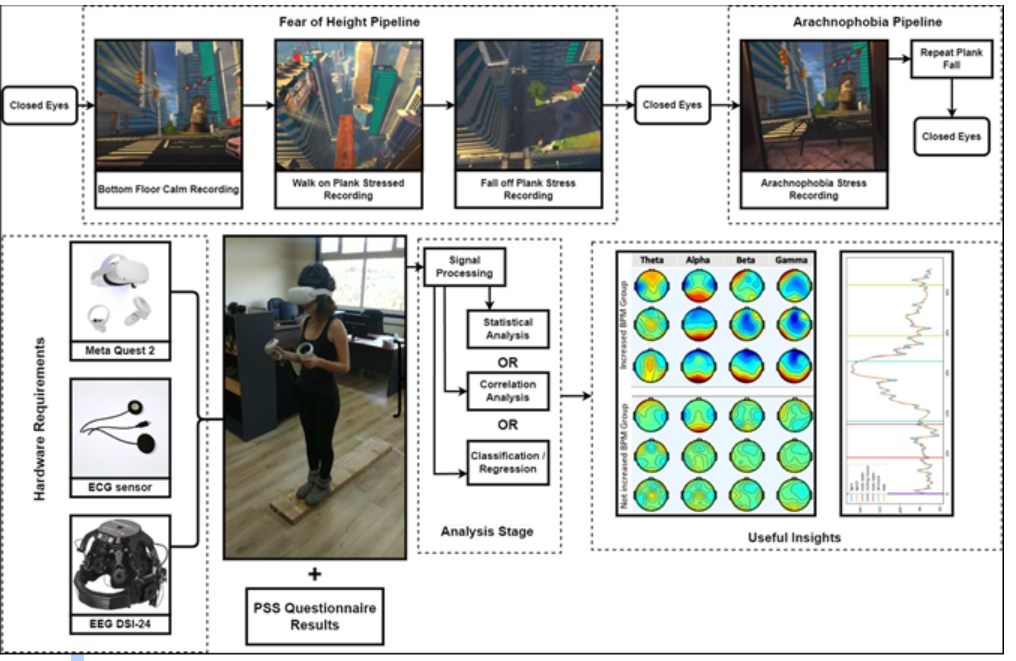An experimental protocol for exploration of stress in an immersive VR scenario with EEG
Publication
DOI 10.1109/SEEDA-CECNSM57760.2022.9932987
Authors List
- Andreas Miltiadous
- Vasileios Aspiotis
- Konstantinos Sakkas
- Nikolaos Giannakeas
- Evripidis Glavas
- Alexandros Tzallas
Exploring Stress and Brain Connectivity with EEG and Virtual Reality
Quick Summary
An into the wild approach for Stress Detection via EEG signals. Based on triggering stress through a virtual high altitude scenario, the employment ofadvanced Machine Learning Techniques resulted to interesting insights of human neurophysiological response
Anxiety is a subject always relevant to scientific research due to its numerous implications for human life. Typical biomarkers used in the physiological assessment of stress include Electrocardiography, cortisol levels, galvanic skin response, and others. Recently, a less widely used tool for stress assessment has resurfaced due to advances in computing power and machine learning techniques, which is Electroencephalography (EEG). Furthermore, as Head-Mounted Displays (HMDs) for Virtual Reality are rapidly adopted by the research community, it becomes apparent that harnessing the advantages of VR for stress exploration can lead to new controlled and reproducible experimental procedures.


In this work, we combine EEG, ECG, and the Perceived Stress Scale with a virtual reality-based fear induction setup to propose a stress assessment protocol. The proposed protocol can be used to investigate brain functional connectivity and, consequently, stress evaluation while it can be expanded through the incorporation of machine learning algorithms for automatic stress level classification.
The application of the proposed protocol in this work makes the study of brain functional connectivity feasible, as well as defines a framework for validating EEG as a stress assessment tool. There is a plethora of biomarkers that can be extracted from EEG recordings, which can be utilized based on the scope of the research. In our recent study, we explored the use of actions of different brain areas and two asymmetry measures, namely, the frontal alpha asymmetry and the alpha asymmetry index, as stress indicators. However, other measures such as squared coherence analysis, mutual information, phase lag index, or EEG complexity through Fractal Dimensions may provide valuable results.

Although this protocol deals with two specific phobias, it can be further extended to incorporate other phobias with the aid of VR HMDs. Analyzing brain activity across multiple phobias can reveal potential patterns in brain activation under stress, regardless of the stress-inducing factor, further contributing to the understanding of brain reactions to stress and the underlying mechanisms

